I’ve been reading a lot about the medieval English longbow and English archers while researching Vampire Outlaw over the last few months. I’ve written a few points I find interesting. Now, there are conflicting opinions about the longbow out there and sometimes people get emotional about it. It’s part of the English national myth, after all. But I think my facts about the English longbow are based on the evidence (don’t we all)…
- Famously made of yew. In fact, ash was also used and was perfectly effective.
- They didn’t call it a longbow back in the day. They just called it a bow. Or a war bow.
- The bow was taller that the user.
- The cord or string was made of all different stuff but commonly linen. Coating it in beeswax helped make it water resistant. Moisture would make the cord stretch and reduce the bow’s effectiveness.
- When you string a bow, it is important to get the tension right. You want the distance between the cord and the belly of the bow to be the distance of your fist with your thumb extended. Like a horizontal “thumbs up”.
- Archers would “warm” the bow by flexing it a few times before shooting it.
- Goose feather was most commonly used for fletching. You need to use three feathers from either the left OR the right wing of the bird so that the arrow flies straight.
- Wearing a glove on your left hand and a wrist guard would help protect from the fletches messing up your wrists as they shoot past.
- Although regarded as a medieval weapon, the concept of a huge bow made from yew or elm goes back to prehistory and there are examples from all over Europe, like Mesolithic examples in Danish peat bogs. So why did they seem to suddenly become enormously popular in England and remain so for hundreds of years while other countries didn’t really bother? Dunno. Fashion? Was it a fad, initially? And then when it proved rather useful, it became tradition. And then when people weren’t that into it any more the Crown made laws forcing everyone to practice every Sunday, because English armies had come to rely on it so much by that point. It continued to be used into the Tudor period (see the Mary Rose finds).
- Arrows were really big. They had to be long enough to span from the tip of your outstretched finger, the length of your arm plus the width of your shoulders, or thereabouts. They had to be thick enough to withstand the enormous force of the cord. Thin arrows would split longways from the rear.
- A few types of iron arrowheads were used over the centuries and for different purposes. Famously bodkin-pointed arrows were narrow, diamond in cross section and great for punching through or between rings of mail (like a stiletto blade on a stick). The force was applied outwards as the point entered a ring, forcing it to open at the rivet or where it was butted closed.
- Broadhead arrows were arguably more common and their flat, wide, wickedly-barbed heads were for ripping into flesh.
- Much lauded for both their extreme range and rate of fire, it is likely they were most effective and most often used when firing at close range, on a flatter trajectory. Longbows were built for power, for forcing those heavy arrows and points through mail and quilted, padded under layers.
- Longbows couldn’t shoot through plate armour. That whole “strapping iron to your body” stuff worked. It was great. And instead, Longbow archers would shoot into the flanks of charging horses. There was a chance of shooting through the eye slits of a helmet or gaps between plates or in vulnerable areas like the insides of elbows or the backs of the legs where the protection was generally mail rather than plate. But the idea that the English longbow ripped through the plate armour of the French at Agincourt and Crecy for example is just not the case. Although there was possibly a chance of the arrows, at extremely close range, punching through the sides of visors where the iron could be very thin. If that had ever happened very often though, I bet they’d have made thicker visor armour.
- So why bother with longbows after plate armour was introduced? Well, they were clearly still seen as effective. Even if the arrows never killed a man in plate – and surely they did – there were other ways it could prove valuable. It broke up charges. Arrows lodged in your articulated plate joints, mail under layer or padded linen gambesson would be an impediment to effective fighting. Thousands of arrows clanging into hundreds of knights must have been terribly devastating to the morale of those facing them. Destroying the enemy’s fighting spirit was arguably more important than killing them anyway. And not everyone could afford plate.
- Archers are often pictured wearing no more than peasant style tunics and rather fetching tights. But throughout history, soldiers have sought out the best possible protection for themselves. Archers would prioritise a helmet and a padded jacket, then mail and, when it became available, plate. English archers tended to get more heavily armoured through the centuries but the general rule is they would each wear as much as they could afford and still do their job effectively. Wouldn’t you?
- Longbows weren’t necessarily loads better than crossbows. You could probably shoot more arrows per minute but you’d be exhausted and you needed loads of arrows to keep it up. Crossbows had an equivalent or better range. It is relatively easy to load, aim and shoot a powerful crossbow. Longbows take a lifetime of building strength to use effectively. Crossbows were especially good in sieges because you could aim down over a wall. And you can shove one into the hands of any old cook and the dude can shoot a king right in the neck, just like that.
- English armies on campaign need thousands upon thousands of arrows. Wagonloads full of them. At Agincourt there were something like 5,000 archers. Say they had ten arrows each for the battle, that’s 50,000 arrows. How many were needed for a whole campaign? With all the sieges, raids and skirmishes. Carting them arrows about must have been a right hassle and a key logistical element to the 14th/15th century English armies.
- The crown would buy them up in bundles from people all over England. Making arrows was a cottage industry. I bet quality control was a major issue.
- Archers weren’t just all about the bow. When they had shot their arrows they could draw their swords, daggers and other weapons and charge in to the melee. In other words, they were not just ranged troops but extremely effective, professional, light troops who provided a flexible role. And they didn’t mind getting their hands dirty. In fact, they probably loved it.
- Although they were commoners, some archers would rise through the ranks (as it were) to become pretty wealthy, famous and well-regarded fellows.
- If it was so awesome, why did the longbow stop being used? Guns. Arquebuses and muskets were just so much better. You they’re more accurate, or at the very least easier for a beginner to learn to be accurate with. You can learn to load and shoot a musket in a few hours, days at most. And a musket ball will do a lot more damage than an arrow, whether bodkin or broadhead. A musket ball has so much more energy and they’re so much more likely to kill.
- Longbows are awesome. Elegant, iconic. Romantic. Shooting a bow is amazing feeling. If you haven’t done so, you should do it, immediately <<< FACT.
What do you think, have I got stuff wrong? I’m not looking for a fight, I’m not one to get emotional about this kind of thing. But they definitely couldn’t pierce even early, low carbon iron plate armour. BRING IT ON.
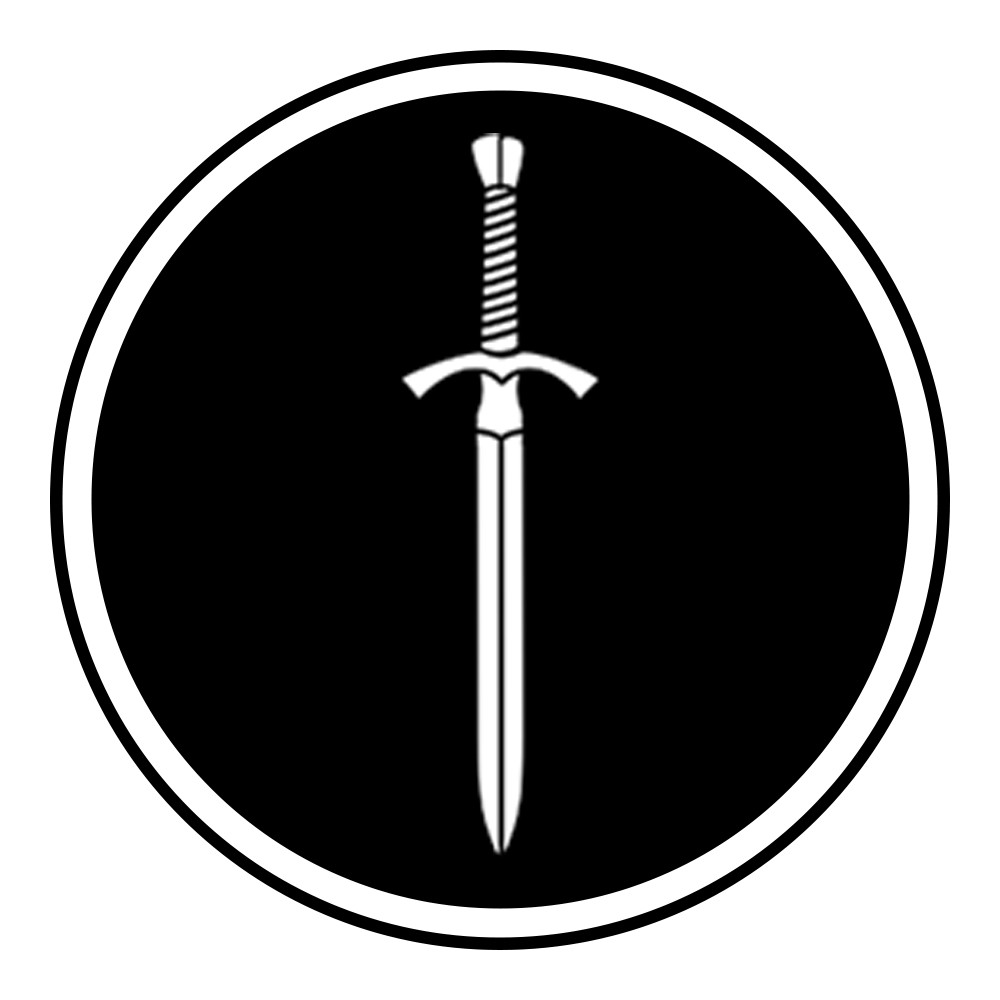



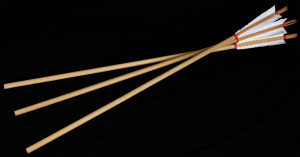
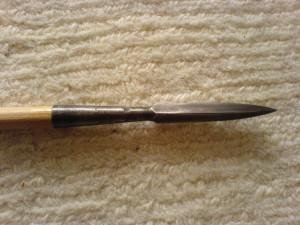

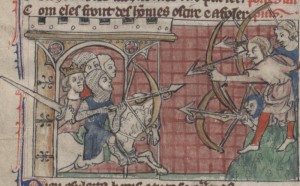

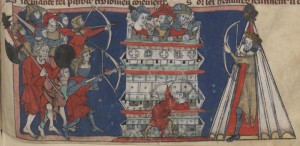

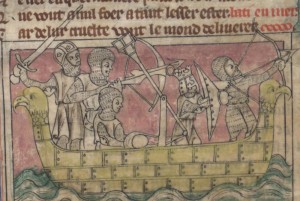
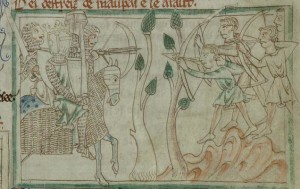
Bows are great, even still. Almost every kid I work with would like to learn archery — not just because ofnKatniss. Heck, I did archery in college and people still hunt with bow and arrow. Thanks for doing the research to get it right.
Thanks Deby yeah kids love archery for sure. There’s something powerfully familiar about it. It just feels right. The movement of it, bending a bow that’s made to bend in that way and that way only. It’s a great social as well as solitary activity.
Bring it on, you say… Well ok then.
To say the longbow couldn’t pierce iron plate is incorrect, I’m afraid.
Check out Mike Loades proving it.
https://www.youtube.com/watch?v=eRXwk4Kdbic
But yeah, only at extreme close range, and assuming you hit any curved surface completely square, and certainly if the iron was tempered in any way, then there was no chance.
But it IS possible for a longbow to kill a man wearing iron.
Thanks for your comment Beau! Yeah I saw that documentary. Seen it a few times in fact. And I think it’s fundamentally flawed because the target is butt against a wall. Even then it barely penetrates the plate enough to go about 2cm into skin. A fair test would be to mount it on a dummy that can move even a short way back when shot as any person would in real life. Moving back as little as a centimetre or two would mean the plate is not penetrated. It might seem like quibbling but the armour was functionally impenetrable. There are no accounts of it being penetrated either only of concern over the face plate. That’s not to say longbows weren’t deadly. They absolutely were. Just never through iron.
In many instances, a knight would be wearing more than just a chestplate, such as chainmail or a padded tunic, so it was more common for arrows to not peirce armour, and in response to that most archers had aimed for the openings between the plate armour and sometimes even shot through the thin metal of the visor, which was the main focus in the article.
Definitively much faster to load than xbows. 10 arrows per battle almost certainly not enough. . big impact even without full penetration. ( more than xbows at range due to their extra weight.) Fun read ta.
Cheers Dave. I agree the weight of the arrows meant they were more effective than contemporary crossbows at range – especially as we have descriptions of the Genoese being driven off by the English archers. I wish we could know how many arrows the English had at the iconic battles. At Crecy and Agincourt, they were at the end of long campaigns and long, pretty desperate marches where arrows were shot in skirmishes, eating into their total numbers. We know they had lots of wagons carting the bundles of arrows and the army at Agincourt was only 6,000 to 9,000 men in size but 5/6ths of them were archers. So say it was 5,000 archers – if they had kept up their rate of 12 arrows per minute for only 10 minutes, that would have been 600,000 arrows. In ten minutes! How many arrows can you get on a wagon? 1,000? If so they would have needed 600 wagons. If each archer had 20 arrows at the start of the battle they would have needed 100,000 arrows in total and could have shot them all in 2 minutes or so. I wish I could see that many arrows in flight, hear the sound. From the English side, of course…